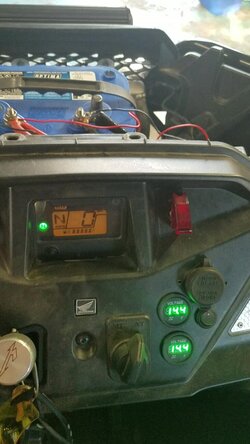I had posted this in another forum when I thought I was posting it here. I wondered why I hadn't received much input until finally I got an answer. It was @TxDoc (thanks doc!). He gave me what I think I was looking for. I just wondered if others have had my experience when charging dual battery setups. Here's my post I originally meant to post here...
I have yet to get around and purchase one or more battery tenders for my dual battery setup. I have been taking my battery charger to individually charge up the batteries if I don't run my P1K5 often enough in the Northern Michigan winter.
My question is why does it appear as though both batteries seem to take the charge when I'm only charging one battery? For example... My battery charger will tell me that the batteries are around 80% charged on both batteries when I connect to them individually. Then, I place the charger on the accessory battery and charge it until full (I don't disconnect the batteries from the Pioneer at this time out of laziness). When I place the charger on the primary battery, it's no longer at an 80% charge but nearly fully charged.
I bought my 2019 used so I did none of the wiring. I would have thought that the item that appears to be the isolator was the item needed to keep the batteries separate. Is this normal?
I have yet to get around and purchase one or more battery tenders for my dual battery setup. I have been taking my battery charger to individually charge up the batteries if I don't run my P1K5 often enough in the Northern Michigan winter.
My question is why does it appear as though both batteries seem to take the charge when I'm only charging one battery? For example... My battery charger will tell me that the batteries are around 80% charged on both batteries when I connect to them individually. Then, I place the charger on the accessory battery and charge it until full (I don't disconnect the batteries from the Pioneer at this time out of laziness). When I place the charger on the primary battery, it's no longer at an 80% charge but nearly fully charged.
I bought my 2019 used so I did none of the wiring. I would have thought that the item that appears to be the isolator was the item needed to keep the batteries separate. Is this normal?


